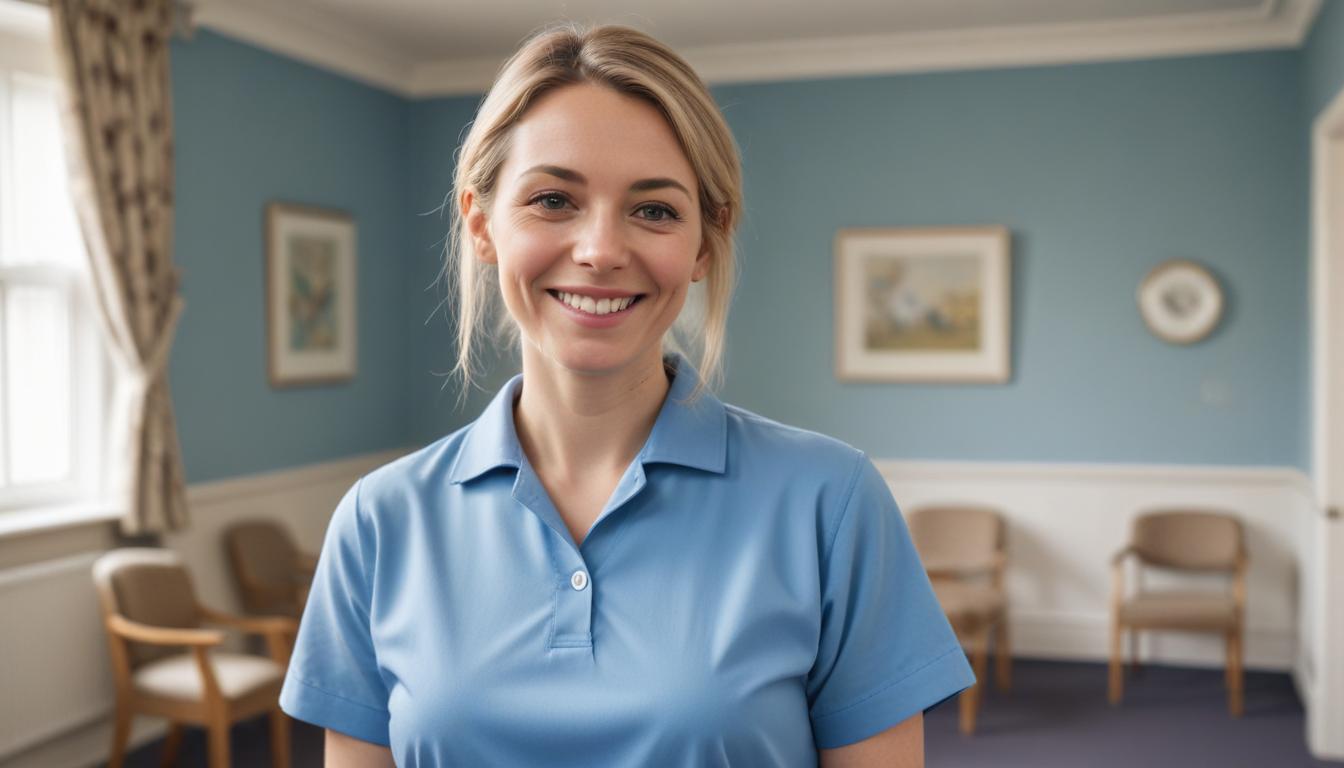Moving and handling in health and social care involves assisting people to move from one position or place to another. This includes helping with bed transfers, lifting from wheelchairs, supporting movement during washing, dressing, or even repositioning in a chair or bed.
These tasks appear simple. However, they present a wide range of risks for both staff and those being cared for. Proper training and awareness are necessary to keep everyone safe.
The Main Risks for Care Workers
Musculoskeletal Injuries
One of the most common risks associated with moving and handling is musculoskeletal injury. This term covers injuries to joints, muscles, ligaments, tendons, bones, and the back.
The back is especially vulnerable. Bending, twisting, reaching, and lifting heavy or awkward loads can result in strains, sprains, and sometimes long-term back problems.
Other affected areas include:
- Shoulders
- Wrists
- Arms
- Knees
Staff often suffer from repetitive strain injuries or sudden injuries from awkward posture or incorrect technique.
Accidents and Falls
Healthcare staff face hazards such as slips, trips, or falls when moving people or heavy equipment. Floors may be wet, cluttered, or uneven in care settings.
Tripping over wires, slipping on spilled fluids, or losing balance while supporting someone can cause injuries like bruises, cuts, or broken bones.
Crushing and Pinching
There is a risk of trapping parts of the body such as fingers or feet when using moving and handling equipment. For example, hoists, bed rails, or wheelchairs can catch and crush digits.
Incorrect equipment use or inattention can lead to more serious injuries, including fractures.
Stress and Fatigue
Carers who repeatedly assist people with moving may experience physical and mental fatigue. Fatigue increases the risk of mistakes. It also makes injuries more likely because tired muscles and joints give less support and protection.
Staff may feel anxious about hurting someone or themselves, leading to stress. Over time, this can reduce morale and lead to burnout.
Risks for People Receiving Care
Skin Damage and Pressure Sores
Incorrect moving and handling can cause skin damage such as friction burns or pressure sores. When skin is dragged, it can tear or break down. Older people or those with limited movement are particularly at risk.
If care staff do not reposition someone correctly or often enough, pressure sores can develop. These are painful and can become infected.
Emotional Distress
Being moved or handled can be unsettling or frightening for people, especially if done in a rough or rushed way. Poor communication can add to distress. This can damage trust and cause emotional upset.
Falls and Fractures
People being supported often have limited mobility. Unsafe moving can lead to falls. Injuries such as fractured hips or head injuries may occur, which can have serious consequences for health and recovery.
Dislocation and Sprains
Incorrect technique can twist limbs or joints unnaturally. This can result in sprains or, in severe cases, dislocation.
Breathing Difficulties
If someone is moved into a poor position, it may compromise their breathing. This is a serious risk for people with respiratory problems or those unable to reposition themselves.
Contributing Factors to Risk
Several factors can make moving and handling even more hazardous.
Poor Training and Lack of Awareness
Without proper training, staff may use incorrect techniques or fail to use equipment safely. Lack of understanding about safe practice increases accident risk.
Inadequate Equipment
Sometimes equipment is unsuitable, broken, or not working properly. Trying to move people manually without hoists or transfer aids puts strain on both staff and those being moved.
Staff might sometimes use makeshift solutions, which are unsafe and heighten the risk of accidents.
Poor Communication
If staff do not explain what they are doing, people may move unexpectedly, increasing the risk of a fall or injury. Lack of communication within staff teams also leads to uncoordinated or incorrect handling.
Time Pressures
Staff may rush tasks due to workload or staff shortages. Moving someone quickly or without careful preparation makes accidents more likely.
Client-Specific Risks
Each person has individual risks. Some have fragile bones, others weigh more, or have unpredictable movements. Not taking personal needs into account can result in unsafe handling.
Unsafe Environment
Risk factors in the environment include:
- Cluttered spaces
- Poor lighting
- Wet or slippery floors
- Lack of space for equipment
All these make safe moving and handling more difficult.
Types of Moving and Handling Tasks That Carry Risk
Transferring from Bed to Chair
Moving someone from a lying to a sitting position and then onto a chair uses many muscle groups for staff and can be awkward. Risks include back strain, dropping the person, or causing skin damage.
Repositioning in Bed
Turning someone in bed can lead to twisting injuries for staff if not done carefully. The skin is at risk from dragging, especially for frail individuals.
Assisted Walking
Helping someone walk, especially if they are unsteady, puts both the person and the carer at risk of falls. Unexpected movements can also cause joint or muscle injuries.
Use of Hoists and Slings
Hoists must be used properly. Staff need to check for equipment faults, correct sling size, and make sure all parts are correctly attached. Mistakes can result in serious injuries like falls from hoists.
Health Consequences for Staff
Long-term health issues may arise from repeated exposure to poor moving and handling:
- Chronic back pain
- Sciatica (pain caused by irritation of the sciatic nerve)
- Joint and muscle problems
- Recurrent strain injuries
Such injuries often lead to staff taking time off work, which has a wider impact on teams and services.
Legal Risks and Responsibilities
There are laws covering moving and handling in the UK, such as the Manual Handling Operations Regulations 1992 and the Health and Safety at Work Act 1974. These laws require employers to protect staff and people receiving care.
Breaches of legal duties can result in prosecution, fines, or compensation claims. Staff might face disciplinary action if they ignore safe practice.
Psychological Risks
Working in a high-pressure environment where staff fear injury or making mistakes leads to anxiety and stress. Repeated exposure to difficult moving tasks without support creates job dissatisfaction and emotional exhaustion.
People receiving care may lose confidence in staff if they feel unsafe, and this can reduce overall wellbeing.
How to Minimise Risks
Registered providers and staff can take several steps to reduce risk:
- Regular and up-to-date training for all care staff
- Using risk assessments before every move
- Ensuring equipment is clean, well-maintained, and suitable
- Checking the environment is free from hazards
- Encouraging team work, communication, and planning
- Responding promptly to staff concerns or reports of injury
Staff can protect their own health by:
- Following correct techniques
- Speaking up about hazards or injuries
- Taking regular breaks to reduce fatigue
People receiving care benefit when their preferences, limitations, and needs are considered at each step.
Role of Risk Assessment
Risk assessment means looking at the task, the person being moved, the staff involved, and the environment to spot hazards and take action.
Assessments should:
- Be carried out before each move
- Include input from the person being supported, where possible
- Be updated if there is any change in needs, equipment, or environment
Documentation plays a part. Written records help maintain high standards and keep everyone accountable.
Adapting to Individual Needs
Everyone is different. Some people can help with their move, others cannot. Some have fragile bones or other health conditions that change the risks.
Staff should:
- Use clear communication
- Invite and respond to feedback
- Involve family or advocates if needed
Final Thoughts
The risks of moving and handling in health and social care are wide-ranging and affect both staff and those receiving support
Safe practice protects everyone. With the right training, good equipment, and a person-centred approach, these risks can be reduced, making moving and handling a safer activity for all.
Subscribe to Newsletter
Get the latest news and updates from Care Learning and be first to know about our free courses when they launch.







